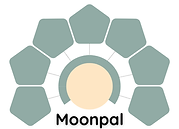.png)

The Science Behind the Product Management Assessment Framework
Our framework is built on extensive research of product management best practices across hundreds of successful SaaS and cloud companies. It provides a structured approach to evaluate all aspects of your product management function, from strategic vision to execution and innovation. It allows for both high-level insights and detailed analysis, which help identify and prioritize key areas of improvement
Expert-Led Product Management Assessment
The framework examines 7 key dimensions, each with multiple sub-dimensions and specific criteria. This multi-level approach allows for both high-level insights and detailed analysis.

Strategic Alignment
Assess how product initiatives support business goals and market strategy. It evaluates product vision clarity, roadmap execution effectiveness, and portfolio coherence. Strong alignment ensures product teams work toward organizational objectives, optimizing resources and market impact.

Data-Driven Decision Making
Evaluate how systematically organizations use data for product decisions. It examines metrics frameworks, experimentation practices, and analytics capabilities. Data-driven organizations establish performance indicators aligned with business goals, implement data collection tools, foster experimentation for hypothesis validation, and use quantitative evidence to inform strategy and prioritization.

Development Process Excellence
Evaluate how effectively product ideas become market-ready solutions. It assesses requirements management, release execution, and agile practices. Strong processes balance speed with quality through clear workflows, acceptance criteria, and decision frameworks that consistently deliver valuable products.

Customer Centricity
Evaluate how well the organization understands and addresses customer needs across the product lifecycle. It examines research practices, feedback mechanisms, and customer-driven decision making. Customer-centric organizations gather diverse customer data, maintain feedback loops, and base decisions on validated customer needs rather than internal assumptions.

Go-to-Market Effectiveness
Evaluate how effectively products are positioned, marketed, sold, and supported post-development. It assesses marketing strategy, sales enablement, and customer success practices. Effective approaches include clear positioning aligned with customer needs, comprehensive sales resources, smooth handoffs between teams, and structured programs that maximize adoption and expansion.

Product Team Effectiveness
Evaluate the product management function's structure, capabilities, and operations. It examines organizational design, skills development, and process maturity. Effective product teams have clear roles, appropriate staffing, balanced expertise, strong leadership, ongoing development opportunities, and well-documented processes that enable consistent execution.

Innovation
Evaluate how organizations identify and capitalize on new product opportunities. It assesses idea generation, R&D activities, and market disruption readiness. Effective innovation management includes structured idea sourcing, prioritization frameworks, dedicated exploration resources, and horizon scanning to identify emerging technologies and market shifts before they impact the business.
Maturity Model: Measure Your Product Management Maturity
Each criterion is evaluated on a 5-level maturity scale:
-
Initial: Processes are ad hoc or non-existent
-
Developing: Basic processes exist but are inconsistent
-
Defined: Processes are documented and generally followed
-
Managed: Processes are measured and controlled
-
Optimizing: Continuous improvement is embedded